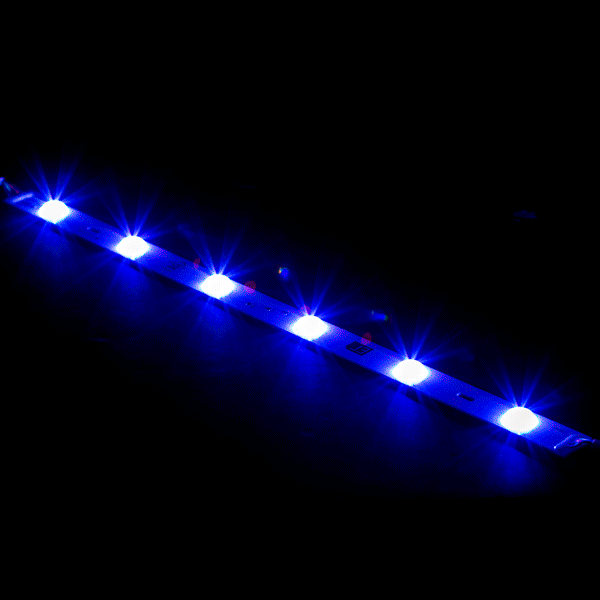Today (January 30, 1929) is the birthday of Isamu Akasaki, who was the winner of the Nobel Prize in Physics for the invention of efficient blue light-emitting diodes.
Isamu Akasaki (Akasaki Isamu) Born in Kagoshima Prefecture at January 30, 1929. Akasaki graduated from Kyoto University in 1952 and obtained a Dr Eng. degree in Electronics from Nagoya University in 1964. During their college years, he visited shrines and temples that local residents rarely visit, walked around the mountains of Shinshu during the summer vacation, enjoyed classes and enjoyed a fulfilling student era. He started working on GaN-based blue LEDs in the late 1960s. Step by step, he improved the quality of GaN crystals and device structures at Matsushita Research Institute Tokyo, Inc. (MRIT), where he decided to adopt metalorganic vapour phase epitaxy (MOVPE) as the preferred growth method for GaN.
In 1981 he started afresh the
growth of GaN by MOVPE at Nagoya University, and in 1985 he and his group
succeeded in growing high-quality GaN on sapphire substrate by pioneering the
low-temperature (LT) buffer layer technology. This high-quality GaN enabled
them to discover p-type GaN by doping with magnesium (Mg) and subsequent
activation by electron irradiation (1989), to produce the first GaN p-n
junction blue/UV LED (1989), and to achieve conductivity control of n-type GaN
(1990) and related alloys (1991) by doping with silicon (Si), enabling the use
of heterostructures and multiple quantum wells in the design and structure of
more efficient p-n junction light-emitting structures.


They achieved stimulated emission from the GaN firstly at room temperature in 1990 and developed in 1995 the stimulated emission at 388 nm with pulsed current injection from high-quality AlGaN/GaN/GaInN quantum well device. They verified quantum size effect (1991) and quantum-confined Stark effect (1997) in nitride system, and in 2000 showed theoretically the orientation dependence of piezoelectric field and the existence of non-/semi-polar GaN crystals, which have triggered today's worldwide efforts to grow those crystals for application to more efficient light emitters.
Akasaki's patents were produced
from these inventions, and the patents have been rewarded as royalties. Nagoya
University Akasaki Institute opened on October 20, 2006. The cost of
construction of the institute was covered with the patent royalty income to the
university, which was also used for a wide range of activities in Nagoya
University. The institute consists of an LED gallery to display the history of
blue LED research/developments and applications, an office for research
collaboration, laboratories for innovative research, and Akasaki's office on
the top sixth floor. The institute is situated in the centre of the
collaboration research zone in Nagoya University Higashiyama campus.

Akasaki worked as a Research Scientist from 1952 to 1959 at Kobe Kogyo Corporation (now, Fujitsu Ltd.). In 1959 he was a Research Associate, Assistant Professor, and Associate Professor at the Department of Electronics at Nagoya University until 1964. Later in 1964, he was the Head of Basic Research Laboratory at Matsushita Research Institute Tokyo, Inc. until 1974 to become a General Manager of Semiconductor Department (in the same institute until 1981. In 1981 he became a Professor in the Department of Electronics at Nagoya University until 1992.
From 1987 to 1990 he was a Project Leader of "Research and Development of GaN-based Blue Light–Emitting Diode" sponsored by Japan Science and Technology Agency (JST). Then from 1993 as a Project Leader of "Research and Development of GaN-based Short-Wavelength Semiconductor Laser Diode" sponsored by JST until 1999. While he was working as a Project Leader of "Research and Development of GaN-based Short-Wavelength Semiconductor Laser Diode," he started in 1995 and until 1996 as a Visiting Professor of the Research Center for Interface Quantum Electronics at Hokkaido University. In 1996 he was a Project Leader of the Japan Society for the Promotion of Science (JSPS)’s "Research for the Future" program" up to 2001. From 1996 he started as a Project Leader of "High-Tech Research Center for Nitride Semiconductors" at Meijo University, sponsored by MEXT until 2004. From 2003 up to 2006 he was the Chairman of the "R&D Strategic Committee on the Wireless Devices Based on Nitride Semiconductors" sponsored by METI.
He is still working as a
Professor Emeritus of Nagoya University, Professor of Meijo University since
1992. Also, as a Director of Research Center for Nitride Semiconductors at
Meijo University since 2004. Also, still working as a Research Fellow at
Akasaki Research Center of Nagoya University since 2001. Akasaki specialises
in the field of semiconductor technology, is best known for inventing the bright
gallium nitride (GaN) p-n junction blue LED in 1989 and subsequently, the
high-brightness GaN blue LED as well. For this and other achievements, Akasaki
was awarded the Kyoto Prize in Advanced Technology in 2009 and the IEEE Edison
Medal in 2011. He was also awarded the 2014 Nobel prize in Physics, together
with Hiroshi Amano and Shuji Nakamura "for the invention of efficient blue
light-emitting diodes, which has enabled bright and energy-saving white light
sources".
Source By: Wikipedia
Information: Ramesh, Assistant Professor
of Physics, Nehru Memorial College, Puthanampatti, Trichy.
Get information like this
https://t.me/joinchat/jpqj3jQLN51kYTk9
Join Telegram Group.
https://chat.whatsapp.com/FisIzCe4Br2CRgxAiicUnf
Join WhatsApp Group
Thanks.
Also, Read
🛑👍 CSIR-NET Physics Materials and Problems
🛑📕 21 GB and Hundreds of Physics E-Books Collection.
🛑🛥️ How does an Electric Motor work? (DC Motor).
🛑🤹♂️ Science Academies' Summer Research Fellowship Programme for Students and Teachers 2022.
🛑🔌 How does a Transformer work - Working Principle electrical engineering.
🛑🎙️ Transistors Explained - How transistors work.
🛑🔥⚡ How Thermocouples Work - basic working principle.
🛑🔌 Voltage Explained - What is Voltage? Basic electricity potential difference
🛑🔌 What is CURRENT– electric current explained, electricity basics.








.jpg)
No comments:
Post a Comment